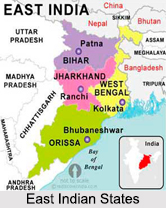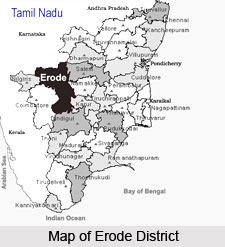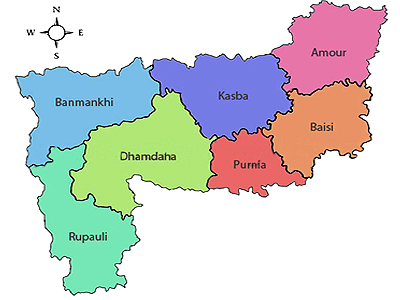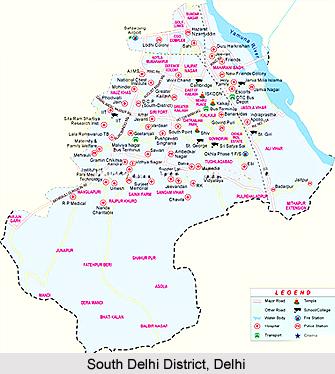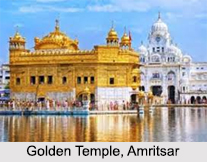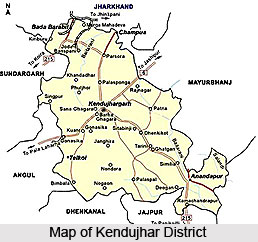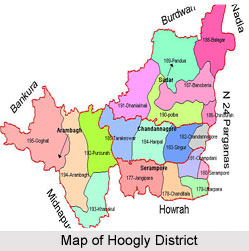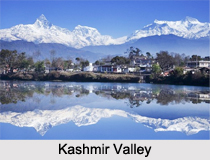 Kashmir Valley is a valley in the portion of the Kashmir region administered by India.
Kashmir Valley is a valley in the portion of the Kashmir region administered by India.
Location of Kashmir Valley
Kashmir Valley is bounded on the southwest by the Pir Panjal Range and on the northeast by the main Himalayan Mountain Range in India. It is approximately 135 km long and 32 km wide, and is drained by the Jhelum River.
Administration of Kashmir Valley
Kashmir valley is however fully under the control of India and is about 15,948 Square Kilometres in area which is about 15.73% of total area under Indian control. Kashmir division is one of the three administrative divisions of the Indian state of Jammu and Kashmir. Kashmir Valley borders Jammu Division to the south and Ladakh to the east while Line of Control forms its northern and the western border. The division consists of the districts namely Anantnag district, Baramulla district, Budgam district, Bandipore district, Ganderbal district, Kupwara district, Kulgam district, Pulwama district, Shopian district and Srinagar district.
History in Kashmir Valley
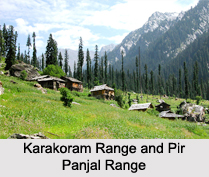 Kashmir Valley became an important centre of Hinduism and later of Buddhism in the 5th Century BC. Later still, in the ninth century, Kashmir Shaivism arose and gained prominence with Avantipur and many other places in Kashmir Valley. But in medieval era, Hinduism and Buddhism declined and Islam rose into prominence. In 1339, Shah Mir became the first Muslim ruler of Kashmir, inaugurating the Salatin-i-Kashmir or Swati dynasty. The rule of his descendants, under the tutelage of the British Government in India left Kashmir Valley as the independent state, which lasted until 1947, when the Maharaja Hari Singh of the princely state signed the Instrument of Accession, joined the Dominion of India.
Kashmir Valley became an important centre of Hinduism and later of Buddhism in the 5th Century BC. Later still, in the ninth century, Kashmir Shaivism arose and gained prominence with Avantipur and many other places in Kashmir Valley. But in medieval era, Hinduism and Buddhism declined and Islam rose into prominence. In 1339, Shah Mir became the first Muslim ruler of Kashmir, inaugurating the Salatin-i-Kashmir or Swati dynasty. The rule of his descendants, under the tutelage of the British Government in India left Kashmir Valley as the independent state, which lasted until 1947, when the Maharaja Hari Singh of the princely state signed the Instrument of Accession, joined the Dominion of India.
Demography in Kashmir Valley
The major ethnic group of Kashmir Valley are Kashmiris and they speak the Kashmiri language. Smaller ethno-linguistic groups include the Gujjars and Bakarwals who mostly live along mountain ranges of the valley. The valley has a Muslim majority population and Islam is practiced by 97.16% of the population with the remaining being Hindus (1.84%), Sikhs (0.88%), Buddhists (0.11%) and others. The principal spoken languages in the valley are Kashmiri and Urdu, with Urdu being the official language. Many speakers of these languages also know English as a second language.
Climate in Kashmir Valley
Kashmir Valley has a moderate climate, which is largely defined by its geographic location, with the towering Karakoram Range in the north, Pir Panjal Range in the south and west and Zanskar Himalaya in the east. It can be generally described as cool in the spring and autumn, mild in the summer and cold in the winter. As a large valley with significant differences in geo-location among various districts, the weather is often cooler in the hilly areas compared to the flat lower part. Summer is usually mild and fairly dry, but relative humidity is generally high and the nights are cool. 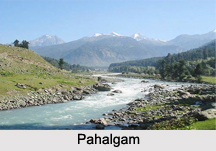 The precipitation occurs throughout the year and no month is particularly dry. The hottest month is July (mean minimum temperature 6 degree C, mean maximum temperature 32 degree C) and the coldest are December-January (mean minimum temperature -15 degree C, mean maximum temperature 0 degree C). Compared with other plain parts of India, Kashmir valley enjoys a more moderate climate but weather conditions are unpredictable. The recorded high temperature is 33 degree C and the recorded low is -18 degree C. On 5th and 6th January 2012, after years of relatively little snow, a wave of heavy snow and low temperatures (winter storm) shocked the valley covering it in a thick layer of snow and ice. Kashmir Valley has seen an increase in relative humidity and annual precipitation in the last few years.
The precipitation occurs throughout the year and no month is particularly dry. The hottest month is July (mean minimum temperature 6 degree C, mean maximum temperature 32 degree C) and the coldest are December-January (mean minimum temperature -15 degree C, mean maximum temperature 0 degree C). Compared with other plain parts of India, Kashmir valley enjoys a more moderate climate but weather conditions are unpredictable. The recorded high temperature is 33 degree C and the recorded low is -18 degree C. On 5th and 6th January 2012, after years of relatively little snow, a wave of heavy snow and low temperatures (winter storm) shocked the valley covering it in a thick layer of snow and ice. Kashmir Valley has seen an increase in relative humidity and annual precipitation in the last few years.
Tourism in Kashmir Valley
Kashmir valley is a popular tourist destination for domestic and foreign tourists. Among the popular tourist places in the valley are Gulmarg that has a ski resort, Dal Lake that has popular house boats, Pahalgam and the major Hindu shrine Amarnath Temple.
Related Articles
Jammu and Kashmir, Indian State
Srinagar,Jammu & Kashmir
Tourism In Srinagar, Jammu And Kashmir
Srinagar District, Jammu and Kashmir
Flora and Fauna of Jammu & Kashmir
Kanji Wildlife Sanctuary, Jammu and Kashmir
Lachipora Wildlife Sanctuary, Jammu and Kashmir
